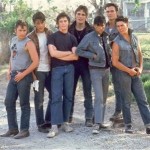The novel plot is in your head. You know how it’s going to develop. (Sort of.) You know your characters. You may even know how the story will turn out. But the nitty-gritty part of writing a novel is learning what to put into the story and what to leave out. Are there some guidelines for making those decisions?
In this blog post we’ll take a closer look.
You Can’t Tell it All
The first thing to point out is the most basic: you can’t hope to tell the whole of what happened to your character. It follows then that a crucial matter in constructing the plot is the selection of incidents to narrate.
Even if you were willing to start way back when the character was born (or even before), and go right through to his death, you would still have to leave out ninety-nine percent of the events of the character’s life. And (UGH) how boring a read it would be.
I think we’ve all read stories that try to cover too much ground. The author got carried away with chronicling so many events that he failed to breathe life into any of the scenes. Even biographies (and autobiographies) must be selective – and novels are even more so.
Interesting? Or Relevant?
Episodes of action in the novel are in constant competition with each other for space and time in the story. The beginning author often experiences a conflict between an episode that is interesting, and an episode that is relevant.
It may be that in a novel there might be room for a sequence that is interesting in and of itself, but with little relevance to the movement of the character; however, those should be few and far between. Too many tend to weaken the plot.
Falling in Love with a Scene
The root cause for doing such is because the author has fallen in love with a particular sequence. Believe me, I remember watching many of my beloved scenes meet their demise at the hands of a discerning editor. Of course, the story was much improved by such editorial cleansing – but it was painful nonetheless.
We can’t allow our personal endearment toward a scene cloud our eye on what’s best for the story. Otherwise a certain scene or sequence can carry us away and could then betray the integrity of the entire plot line.
The Author – The Final Judge
Only you as the author can be the final judge of what’s important to do at length in your story; only you can tell what’s of real relevance, or real interest. The story will make certain demands on you, but after all, you are the one who’s writing the story.
There are in fiction a million ways to do everything, but the important thing is that they be done. What’s important in the story (to the story) must be emphasized and played out. What is unimportant must be briefly summarized, or skipped entirely, so as to permit full dramatic rendering of what is of consequence.
When I wrote the first draft of my teen novel, Flower in the Hills, I set the opening scenes with Latina in her final days of the school year at her high school back home. At the time, I felt it was necessary for the reader to see her in her school setting as she interacted with friends and made plans for the upcoming summer vacation.
While that was interesting to me, it was not relevant to the story. I soon learned (with the assistance of good editors) that I was merely writing backstory and getting to know Latina.
The final rendition of the novel opens with the scene of Latina growing extremely carsick as she rides in the back seat of the family car while her father navigates the hairpin curves of the Missouri Ozarks. Now that was relevant.
Be Aware
For the beginning writer, it’s best not to be too concerned by the difference between interesting scenes and relevant scenes. It’s enough to be aware. On the first draft simply throw out all restraints and write. Work to get the story out of you and onto the paper (computer screen).
Be Courageous 
Once the first draft is completed, now the time comes to buck up and be strong and courageous enough to 1) discern the unimportant scenes, and 2) mercilessly edit them out.
If you’re planning to be your own editor, this process is even more crucial to the novel’s success.
What Works for You?
If you’ve come upon a process to be the judge of your own work (deciding which scenes are relevant, and which are simply interesting), please leave your comments below. I’d love to hear from you.


 The Norma Jean Lutz Classic Collection now has three 3 available titles.
The Norma Jean Lutz Classic Collection now has three 3 available titles.
These clean teen reads, while authored in the past, offer timeless story lines that teens love.





 melodrama The Drunkard. Originally known as the Riverside Studio, the building was listed on the U.S. National Register of Historic Places in 2001.
melodrama The Drunkard. Originally known as the Riverside Studio, the building was listed on the U.S. National Register of Historic Places in 2001.



